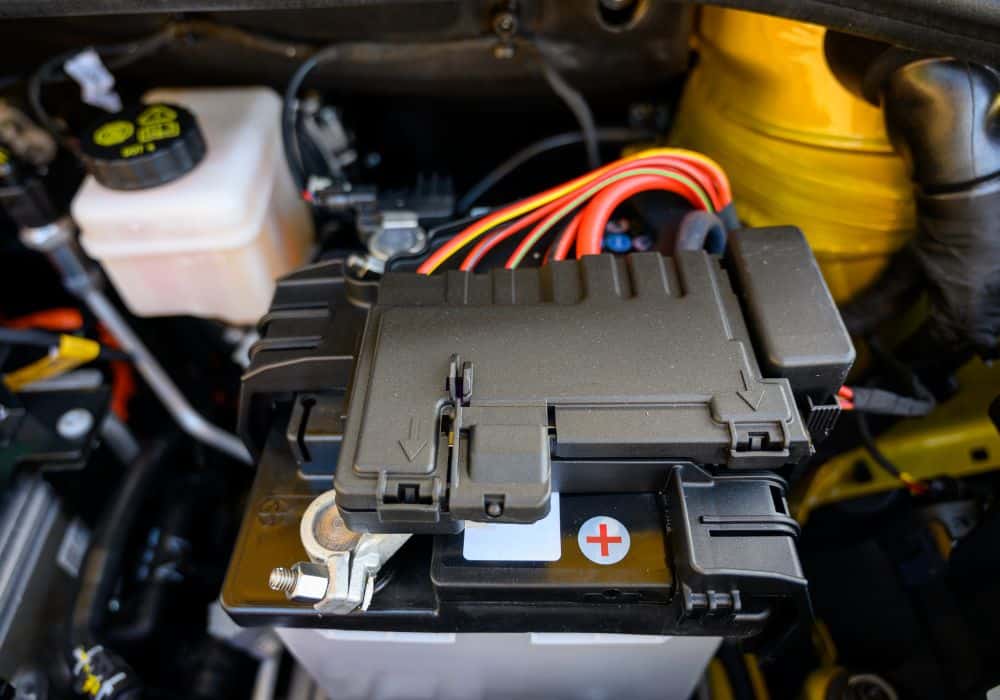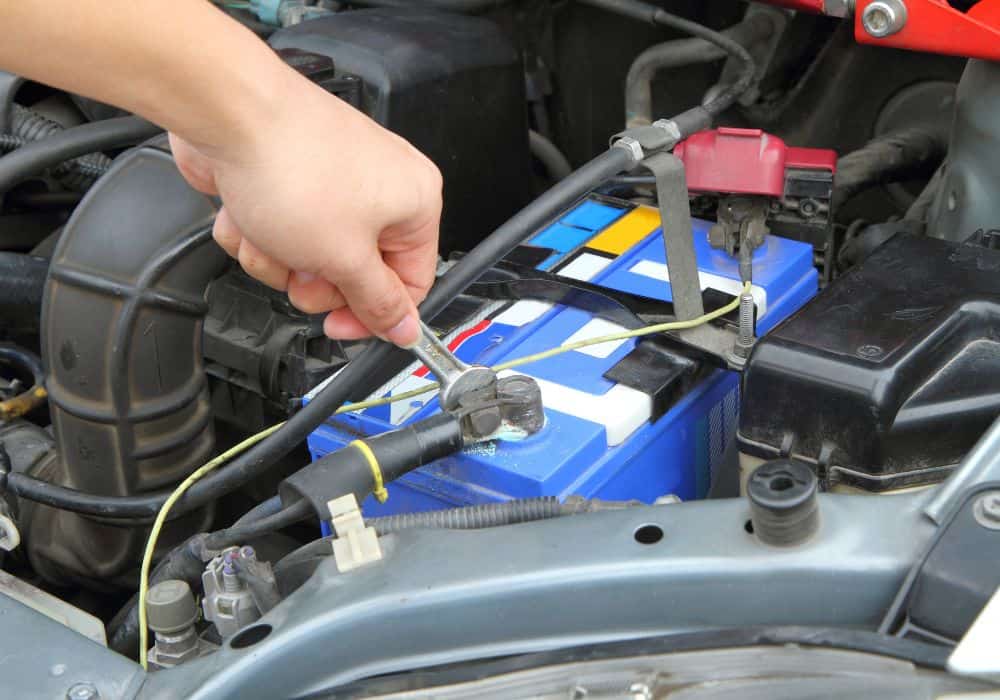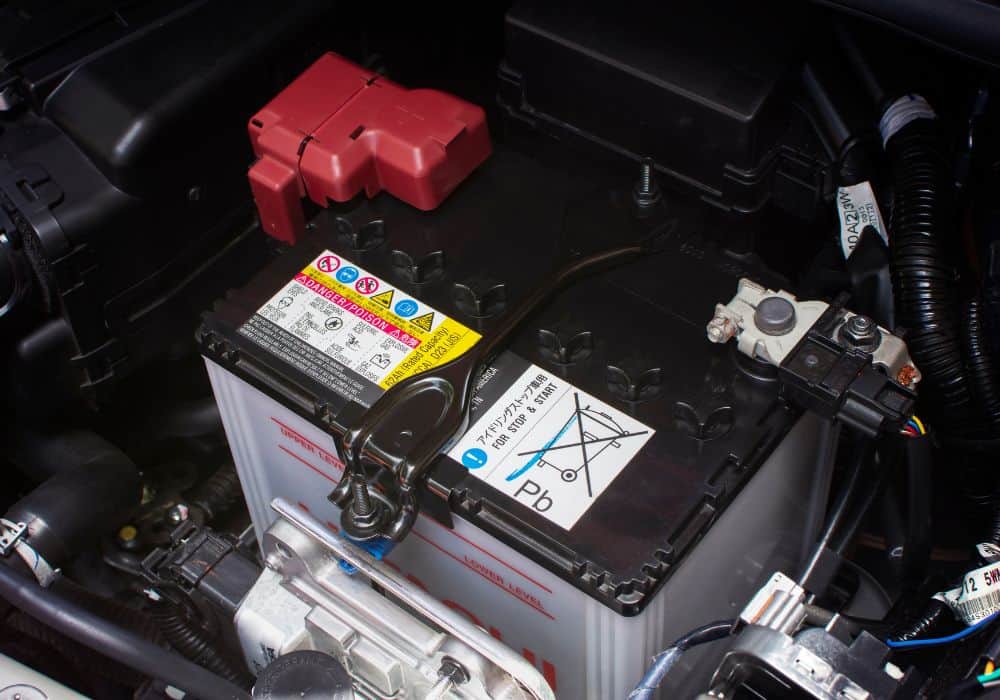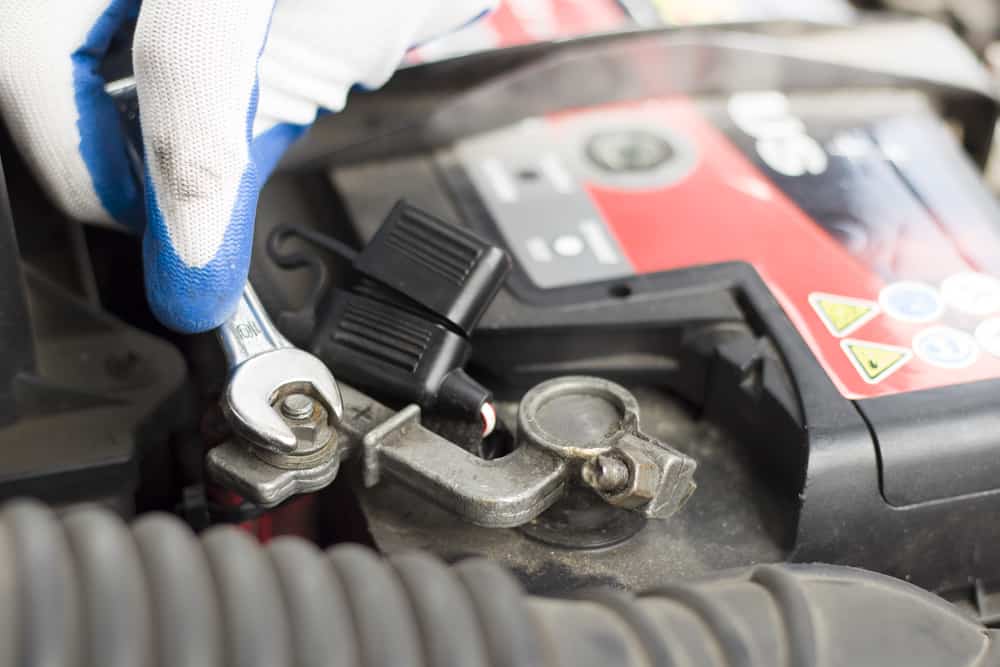A vacation is when you’re supposed to have fun, be at ease and have zero stress. But sometimes, if we forget to prepare ahead of time, some of our most dependable equipment will suddenly go on their own vacation!
A car battery needs to be treated with care before your holidays. After all, if it is left parked for an extended period, its internal electronics, like the clock and alarm, can zap away all of its energy.
And when you return home from your trip, the last thing you want to is a flat battery and no way to drive around.
In this article, we’ll show you just how important it is to prepare your battery ahead of your vacation. We’ll highlight the enormous benefits of disconnecting it from your car and explain step-by-step how to do the job yourself.
Table of Contents
What causes a battery drain?

Many people falsely assume that a car needs to be on for its power to be used. But several electronic systems work in your car’s background, even when powered off.
The car clock, alarm systems, radios, and internal computer systems may consume power. You may also have external accessories, like dashcams, chargers, or a navigational system; these can all add to the energy drain of your battery.
Although the amount may seem minimal, over a long period (like a 2-week vacation), the power all adds up – and eventually will end up eating away at all the energy stored in your battery.
But there is a way to protect it from this event – disconnecting. No matter what your skill level, disconnecting (and reconnecting) your car battery is a straightforward thing to do.
How to disconnect the battery of your car?
Equipment you’ll need:
- Protective gear
- Socket wrench
- Socket wrench extender
Step-by-step guide:
- Put on protective goggles and safety gloves before beginning.
- Open your car hood up and inspect the battery and surrounding area first. Check for signs of corrosion, dirt, or breakage – all of which can lead to battery failure on their own. Wipe clean with a cloth or towel.
- Locate the negative terminal of the battery. It is usually covered with a black cap or has a small minus sign (-) for easy identification.
- Examine the nut on the negative connector, and adjust your socket wrench accordingly. Use a socket wrench extender if your battery is in a hard-to-reach place.
- We remove the negative terminal before the positive; otherwise, you might cause a short circuit.
- With the correct socket size, turn the nut counterclockwise. Pull off the negative connector and put it aside, away from the battery.
- Next, loosen the nut on the positive terminal of the battery. It usually has a red cap and a plus sign (+) for easy identification.
- Remove the battery. Do not allow the positive terminal to touch any metal parts.
Where should you store your disconnected car battery?
There is no point in disconnecting your car battery and storing it in a hazardous place that damages it beyond repair. So once you disconnect it, find a suitable place for safekeeping! Consider the following:
- Cool temperature: A high temperature increases the chemical reactions inside a battery, degrading it faster. Store the battery in a cool place with an average temperature of 59°F (15° C).
- Avoid moisture: Car battery terminals can become corroded because of increased moisture. Ensure you store the battery in a dry place, free from damp residue. Consider using plastic bags to protect vulnerable connections.
- Flooring: An old wives’ tale warned against storing car batteries on concrete flooring, as the theory was it corroded the battery fast. But modern battery casings have corrected this vulnerability – you do not need to place wood or cloth underneath.
Signs your battery is low or failing

If you’ve just returned home, placed your battery in, and turned the ignition on, you might wonder what the signs are that your battery drained away.
Common signs of a weak batter include:
- Headlights and interior lights are dim
- Unusual clicking sounds at the time of ignition
- Longer than usual startup time
- Backfiring
How to restart a flat battery?
Despite disconnecting your battery from your car and thus reducing potential drain, at some point, your battery will self-discharge. If you’re going on a considerably long vacation, this is something you’ll have to factor into the equation.
The rate of a battery self-discharging depends on your battery type, age, condition, and environmental factors. In most cases, a disconnected battery may last four weeks to two months before it self-discharges completely.
A voltmeter or multimeter can help assess how much charge your battery has. But if in doubt, use another car’s working battery to reignite your dead car battery back into good working order—clamp jumper cables to the corresponding terminals of your failing battery to a working vehicle.
Start the nearby car and let it run idle for a few minutes. Then start your vehicle, and again let it run idle for a few minutes. Allow the cars to run for a good time to recharge the battery. Check the voltage afterward to ensure your battery can withhold charge and doesn’t need replacing.
Perhaps its time to replace your battery
Sometimes, disconnecting your car battery ahead of a vacation prompts you to consider replacing it with a brand-new one. After all, car batteries have a lifespan of between 3-4 years, and you may wish to improve your car’s reliability.
No matter how well you treat your battery when its time is up, it’s time is up. The average cost of a car battery range from $60-$300, depending on the model. You can install a new battery, similar to how we’ve explained earlier in the article.
Alternatives to disconnecting your battery

Sometimes, a big vacation is spontaneous, and you don’t have much time to prepare for it. If you don’t have time to learn about and disconnect your battery, you can use a simple device known as a trickle charger.
Trickle chargers provide just enough power to a car battery to prevent it from stopping. They are designed to be connected and left on for long periods. Their only downside is that they must be purchased separately, which can add to the cost of battery maintenance.
Another alternative is to ask someone at home to turn on your car regularly during your vacation. Better yet – ask them to drive it a short distance to maintain the battery’s energy level.
Expert Tips:
- Manual: Always consult your manufacturer’s manual or a qualified mechanic for guidance on how long a battery may be disconnected.
- Order: Always disconnect negative cables before positive cables to prevent a short circuit from developing.
- Disconnect accessories: Several standard accessories can cause car battery drains. Disconnect sat navs, chargers, and dashcams when not in use.
- Security: When disabling security alarm systems, ensure your car is adequately secured and protected at its location. The last thing you want is for it to be stolen!
- The lifespan of the battery: The average car battery lasts between 3-4 years. Consider a battery replacement once this time expires.
- Safe storage: Store the battery safety to prevent moisture from entering.
- Alternatives: As well as disconnecting the battery, you can try a trickle charger for constant upkeep of your battery or ask a friend to turn on/drive your car regularly.
Conclusion
A vacation is meant to be a fun time. And just as you leave your destination looking forward, you want to return home refreshed, recovered, and stress-free.
Returning home to find your car battery has wholly drained itself while you were away can be an annoying and costly problem to encounter. It might even take the appeal of your next long holiday away entirely.
But as we’ve learned from this article, you can salvage your battery juice simply by disconnecting it from your car. Not only will this protect your battery’s capacity and structural integrity, but the job is relatively easy to do, regardless of your skill level. No need to hire a costly mechanic to do a job you’re more than capable of doing yourself!
If you still have questions about disconnecting a car battery or have some helpful tips, please share them in the comments below.
But as always, remember these three simple steps:
- Your car’s internal electronics, including the clock and alarm, will slowly drain a vehicle over long periods– even if the car is turned off!
- Always check your car’s manufacturer manual to see how a disconnected battery, including its security system, may affect your vehicle.
- Disconnecting the car battery is straightforward once you handle and store it appropriately.
